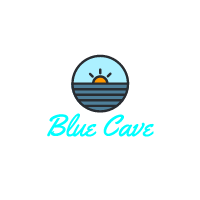The Blue Lagoon is blue due to the reflection and scattering of sunlight by the clear water and white limestone bottom, which enhances the blue wavelengths.
Why isn’t the Blue Lagoon another color?
The combination of clear water, sunlight, and the white limestone bottom specifically accentuates blue wavelengths, giving the lagoon its distinctive color.
Does the color of the Blue Lagoon change?
Yes, the color can appear more vibrant at different times of the day and under different weather conditions.
What time of day is the Blue Lagoon the bluest?
The Blue Lagoon is typically the bluest around midday when the sun is highest.
Blue Cave & Blue Lagoon Tour – Croatia | 4K
Does the weather affect the blueness of the lagoon?
Yes, sunny weather makes the lagoon appear bluer, while cloudy weather can make it look less vibrant.
Can you see the blue color from outside the lagoon?
Yes, you can see the blue color from outside the lagoon, especially from elevated viewpoints.
Is the color of the Blue Lagoon natural?
Yes, the blue color is entirely natural, resulting from the interaction of sunlight, clear water, and the limestone bottom.
Does the Blue Lagoon look blue at night?
No, the Blue Lagoon does not appear blue at night because there is no sunlight to reflect and scatter.
Does the Blue Lagoon’s blueness depend on the angle of the sun?
Yes, the angle of the sun affects the intensity and shade of the blue color.
How does the limestone floor contribute to the lagoon’s blue color?
The limestone floor reflects sunlight, which enhances the blue wavelengths and makes the water appear bluer.
Is the color of the Blue Lagoon similar to other lagoons around the world?
While some other lagoons may also appear blue, the specific shade and intensity can vary depending on local conditions.
Why isn’t the Blue Lagoon green, since water is often represented as green?
The clear water and white limestone bottom reflect blue light more efficiently than green, making the lagoon appear blue.
Is the Blue Lagoon always blue, regardless of the season?
The Blue Lagoon is generally blue year-round, but the intensity of the color can vary with seasonal changes in sunlight and weather.
Can pollution affect the color of the Blue Lagoon?
Yes, pollution can affect water clarity and quality, potentially altering the lagoon’s color.
What is the science behind the blue color of the Blue Lagoon?
The blue color results from the scattering of sunlight by the clear water and the reflection of light off the white limestone bottom, which enhances blue wavelengths.
Why is the Blue Lagoon a popular tourist destination?
The Blue Lagoon is popular due to its stunning natural beauty, unique blue color, and the overall experience of visiting such a picturesque and serene location.
Has the blue color of the Blue Lagoon been featured in art or literature?
Yes, the Blue Lagoon has inspired various works of art and literature, capturing its unique beauty and allure.
Are there certain months when the Blue Lagoon is bluer?
The Blue Lagoon tends to be bluer in the summer months due to longer daylight hours and clearer weather.
Does the blue color fade if you go deeper into the lagoon?
Yes, the blue color can appear less intense as you go deeper, where less light penetrates.
Can you see the blue color of the lagoon while swimming in the water inside the lagoon?
Yes, you can see the blue color while swimming, especially when looking at the water around you and towards the surface.
Why does the Blue Lagoon attract scientific interest?
Scientists are interested in the Blue Lagoon due to its unique ecological environment, clear water, and the effects of light and minerals on water color.
Has the blue color of the Blue Lagoon inspired any local myths or legends?
Yes, the striking blue color has inspired various local myths and legends about its origins and the creatures that might inhabit it.
How does the depth of the Blue Lagoon affect its color?
Shallower areas appear brighter and more intensely blue due to more sunlight reflection, while deeper areas can appear darker and less vibrant.
